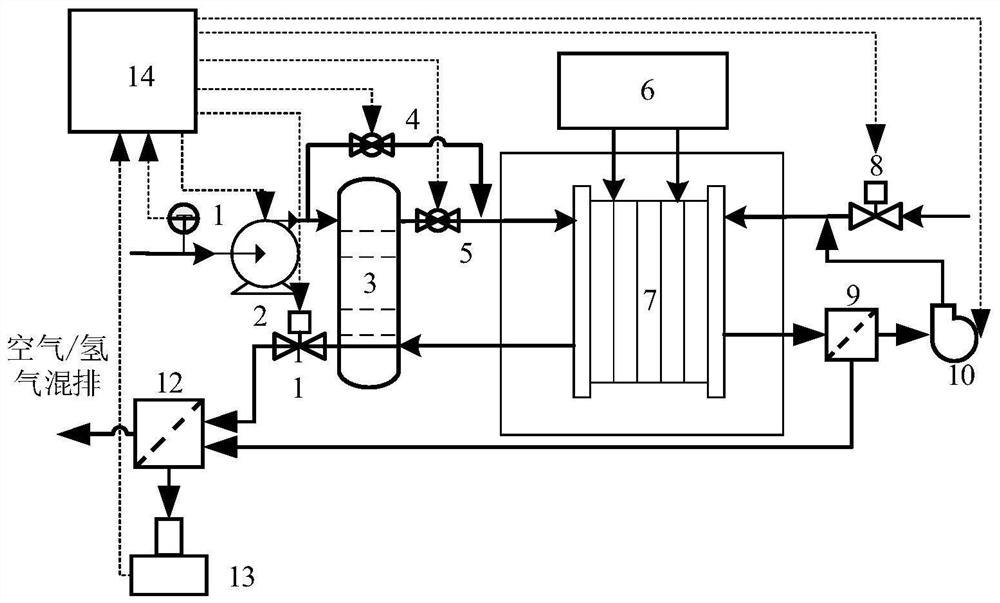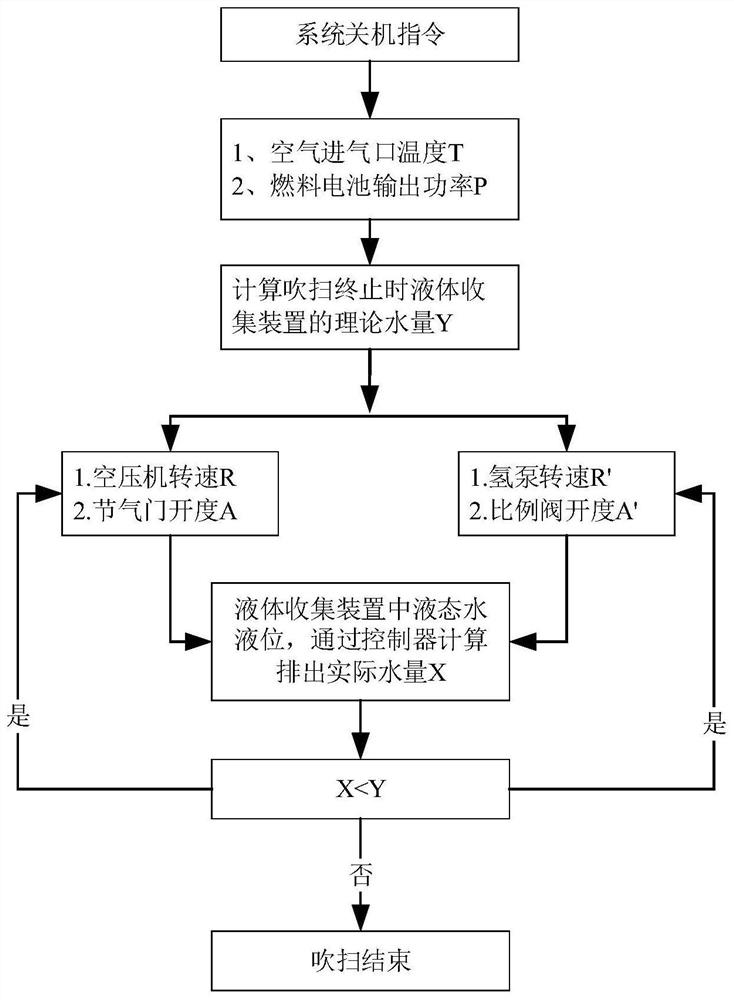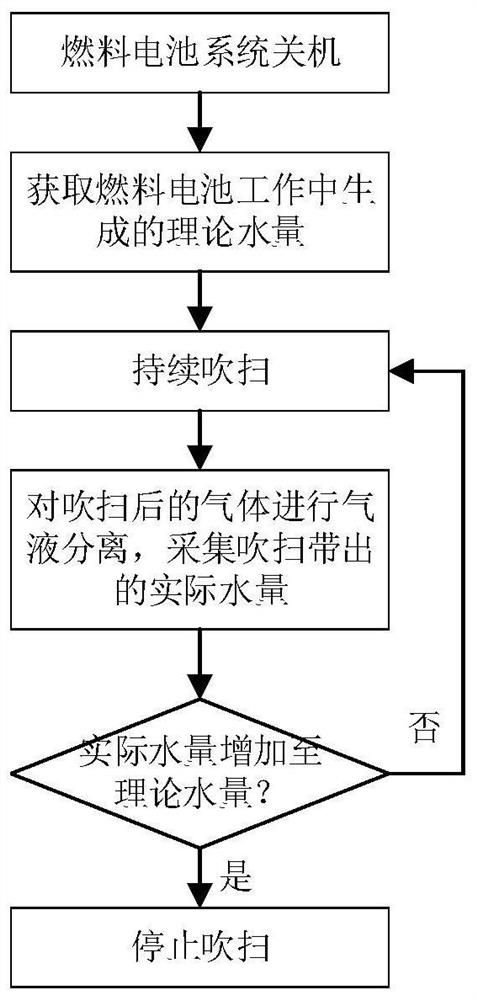Fuel cell shutdown purging method, device and system
A fuel cell system, fuel cell technology, applied in the direction of fuel cells, circuits, electrical components, etc., can solve the problems affecting the performance of fuel cells, long purging time, etc.
- Summary
- Abstract
- Description
- Claims
- Application Information
AI Technical Summary
Problems solved by technology
Method used
Image
Examples
Embodiment Construction
[0029] System embodiment:
[0030] This embodiment provides a fuel cell shutdown purging system, which can figure 1 The fuel cell stack 7 in is purged to take away the liquid water on the cathode side of the fuel cell stack.
[0031] The system includes two purge lines of an air line (including an air supply line and an air outlet line) and a hydrogen line (including a hydrogen supply line and a hydrogen outlet line).
[0032] like figure 1 As shown, the air inlet of the air supply pipeline is provided with a temperature sensor 1 for detecting the outside air, the probe of the temperature sensor 1 can be set inside the pipeline, and an air compressor 2 and a first valve are provided on the air supply pipeline Switch 4; a throttle valve 11 and a first water separator 12 are arranged on the air outlet pipeline. The air compressor 2 cooperates with the throttle valve 11 to take away the liquid water on the cathode side of the fuel cell stack by providing air with a certain flo...
PUM
 Login to View More
Login to View More Abstract
Description
Claims
Application Information
 Login to View More
Login to View More - R&D
- Intellectual Property
- Life Sciences
- Materials
- Tech Scout
- Unparalleled Data Quality
- Higher Quality Content
- 60% Fewer Hallucinations
Browse by: Latest US Patents, China's latest patents, Technical Efficacy Thesaurus, Application Domain, Technology Topic, Popular Technical Reports.
© 2025 PatSnap. All rights reserved.Legal|Privacy policy|Modern Slavery Act Transparency Statement|Sitemap|About US| Contact US: help@patsnap.com



